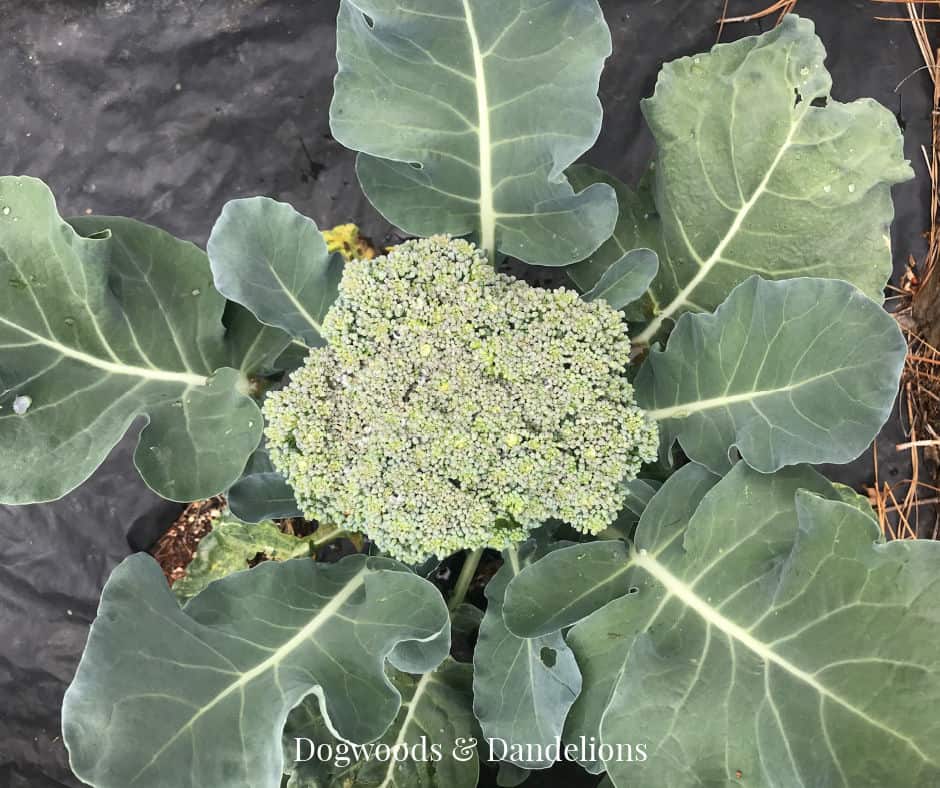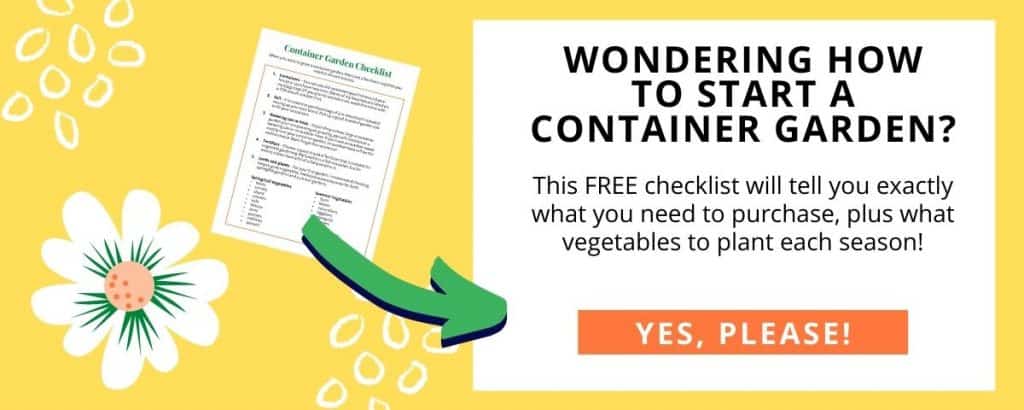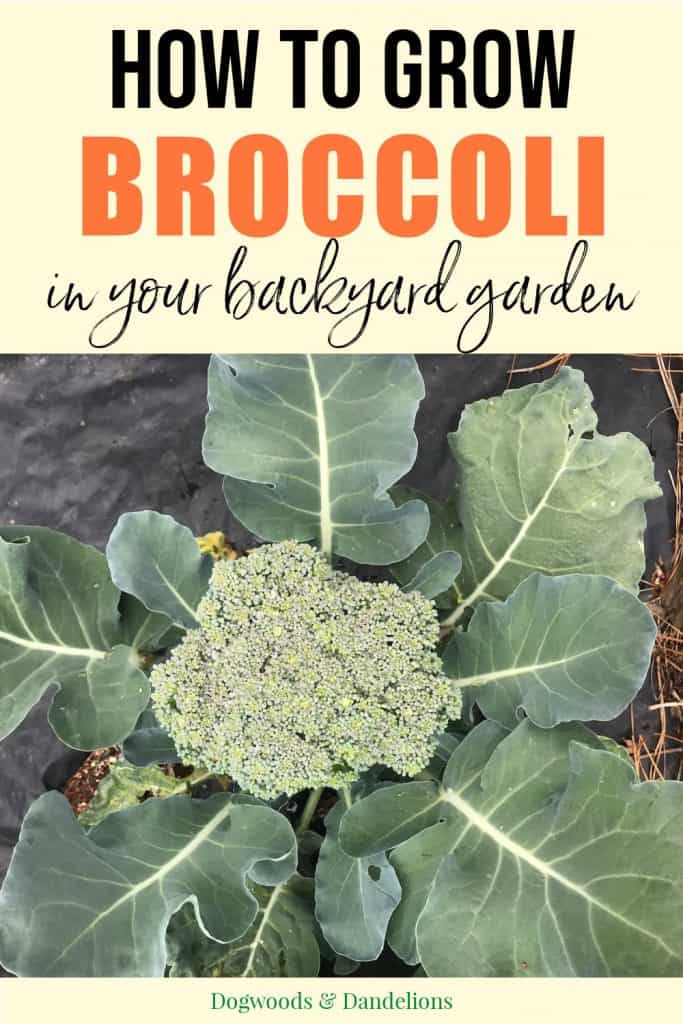How to Grow Broccoli
Broccoli can be a finicky vegetable to grow. It needs cool temperatures, but not too cold so getting it into the garden at the right time is critical to success. Learn all about how to grow broccoli in this post.
How to Plant Broccoli
If this is your first time growing broccoli, I recommend starting with transplants from the store. The plants need to be put in the garden while it is still cool but not too cold. Many first time broccoli growers have better luck growing it in the fall.
If you do decide to start it from seed, it needs to be started indoors at least 6-8 weeks before your last frost. However, this may not be enough time depending on your climate.
Here in North Carolina, where it goes from cool to hot pretty quickly, we need to start broccoli in January or early February at the latest. (This is almost 12 weeks before our last frost date.) I don’t recommend starting broccoli directly in the ground outdoors. If planting for fall, start indoors 6 – 10 weeks before your first fall frost.
Broccoli is a cool-season vegetable preferring temperatures between 60 and 80 degrees for optimum growth. It can handle some frost, but may “button” (produce only small heads) if the weather is below 40 degrees for a long period of time.

Affiliate Disclosure: Please note that some of the links in this article may be affiliate links and I may receive a small commission if you purchase something through a link. It will not change your cost. As an Amazon Associate, I earn from qualifying purchases. For more information, see my disclosures page.)
Plant seeds 1/4″ deep in seed starter mix or Jiffy pellets. Provide steady moisture while the seeds are germinating and throughout the growing season. You can transplant broccoli to the garden 3 to 4 weeks before your last frost in the spring or when your daytime temperatures are above 40 degrees most days.
Most experts recommend waiting until after your last frost to plant your broccoli in the garden. This is generally too late here in North Carolina since our spring doesn’t last too long.
Broccoli takes between 60 and 80 days to mature from planting in the garden. If we waited until our last frost date of April 15 to plant the seedlings in the ground, we wouldn’t expect broccoli until mid to late June. By then the daily highs are in the mid to upper 80’s. Too hot for broccoli.
When planting your transplants in the garden space the plants 18″ apart. If planting in a traditional row garden, space the rows 30″ apart.
Place a stick against the stem of your broccoli or a toilet paper roll around the plants if cutworms are a problem in your area. This prevents the cutworm from slicing your plant at the soil level. If the cutworms do get your plant, there is no saving it.
Fertilize your broccoli with a quality vegetable fertilizer every 2 to 3 weeks and keep it evenly watered. A good mulch will also help keep the moisture levels consistent and help prevent bolting if the temperatures rise. You can cover them with shade cloth to help keep the plants cool.
Broccoli needs about 6-8 hours of sunlight each day so it makes a suitable crop for areas that don’t get full sun all day.
Can You Grow Broccoli in Containers?
Broccoli can definitely be grown in containers. If you live in an area that heats up quickly in the spring, (like us in NC) growing broccoli in containers may allow you a longer period to grow.

The containers can be placed in the sun during the early, cool days of spring, and then moved to the shade as the temperature starts to rise above 80 degrees.
This method will help prevent the broccoli from bolting too quickly.
How and When to Harvest Broccoli
Broccoli should be harvested before the buds start to open. If you see any yellow, it is time to harvest the heads immediately. Using a sharp knife, cut the entire head off at one time.
It is best to harvest broccoli early in the morning as it will lose moisture as the day wears on. While each plant will only produce one head of broccoli, the plants will produce small side shoots if you leave it in the ground.
Many people recommend soaking broccoli in a sink full of cool water with a couple of Tablespoons of salt dissolved in the water. This will draw out any cabbage worms that may be hiding in the heads.
Broccoli will store from 4-7 days in the refrigerator. Remember the entire plant including leaves and stalks is edible. Any part that you choose not to eat can be fed to the chickens.
Broccoli Pests & Diseases
Pests
There are many pests that like broccoli too. The most common one is cabbage moths. I have learned over the years to go ahead and cover my broccoli (and cabbage and cauliflower) with a row cover as soon as I plant it to keep the insects out.
If you notice pretty white moths flying around your brassicas, it’s already too late to cover the plants. The cabbage moths lay their eggs in the plants and once they hatch, you will have an infestation of worms. Yuck.
If you do need to spray, bacillus thuringiensis, also known as BT, is the recommended treatment. This is a treatment that the worms need to eat to be effective. It is approved for organic gardening and is generally considered safe as it doesn’t harm bees, ladybugs, and other beneficial insects.
Other pests include aphids, cabbage root maggots, and flea beetles. Many of these pests can be controlled with diatomaceous earth.
I personally feel these are very safe pest control methods. However, when using any pesticide in your garden, please do the research yourself to be sure you are comfortable using it.

Diseases
There are a few diseases that can affect broccoli. The two most common are clubroot and black rot. Clubroot is a disease that is soil-borne. It enters the plants through the roots causing the roots to enlarge. The roots decay along with the broccoli plant.
Black rot is also called bacterial soft rot that starts off looking like water logged areas on your plants. The area expands and becomes soft and mushy. This disease often enters the plants through damaged areas from insects and wet or humid conditions accelerate the disease.
Recommended Varieties of Broccoli
There are many varieties of broccoli that are great to grow in your backyard garden. These are a few of my favorites.
- De Cicco – This heirloom variety produces smaller initial heads However its many side shoots and the tender stalks and leaves more than make up for the small heads.
- Waltham 29 – High yields on this old variety make it a favorite. It has great tolerance for cold weather so it is a good variety for a fall or winter garden.
- Miranda – This variety takes up to 100 days to mature but the beautiful purple color makes it well worth the wait. One of my all-time favorites.
- Belstar – Good for almost any climate this variety has great flavor and produces 6 to 8 inch heads whether planted in the spring or fall.
Have you ever grown broccoli before? What is your favorite variety?
Related Posts:

